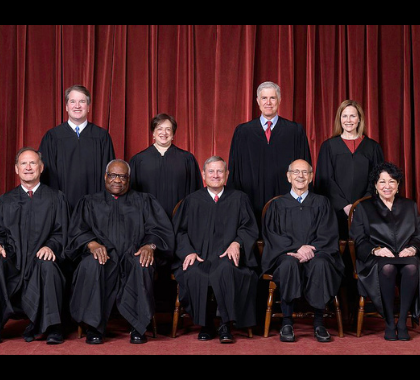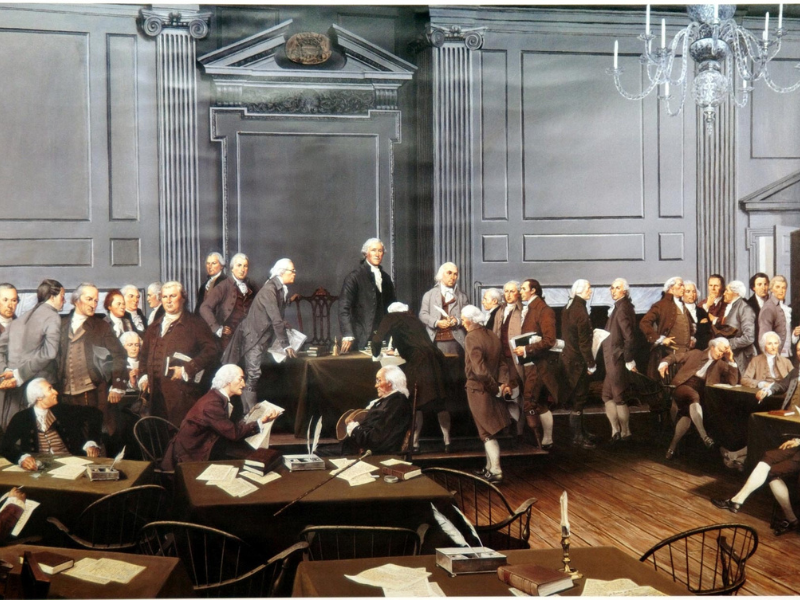On Wednesday, the Supreme Court heard oral arguments in the case of Dobbs v Jackson Women’s Health. This case challenges the constitutionality of a Mississippi statute that bans abortion after 15 weeks of pregnancy, except in cases of medical emergency or a severe fetal abnormality. The law is a direct challenge to the fetal viability standard adopted in the 1992 decision in Planned Parenthood v Casey.
In Casey, the Supreme Court affirmed the central holding of Roe v Wade that women have a constitutional right to have an abortion throughout pregnancy, with limited exceptions in the third trimester, relying on the 14th Amendment to the Constitution. Casey, however, discarded the third trimester framework set in Roe and replaced it with a standard that any law which creates an “undue burden” on the ability of women to obtain an abortion before fetal viability (i.e., when the fetus is capable of lving outside the womb) was unconstitutional. The Supreme Court did not define what constitutes an “undue burden.”
As a result, there have been dozens of cases in which District Courts and Appellate Courts have struggled with whether particular restrictions or regulations of abortion are unconstitutional. The District Court in Dobbs found that the Mississippi law created an “undue burden” because it did not permit most abortions after 15 weeks, while fetal viability occurs at approximately 24 weeks. The Appellate Court affirmed the District Court opinion.
Based on questioning in oral arguments, it appears likely there will be a major change in abortion law and culture concerning abortion and pregnancy. The change could overrule Roe and Casey outright and eliminate the constitutional right to abortion created by Roe or it could be to restrict the abortion right created by Roe and modified by Casey. If the Court overrules Roe and Casey, the issue of abortion would be returned to the states, where it was prior to Roe. Each state could decide whether or not abortion would be legal in its state and under what circumstances – and, if legal, what restrictions and regulations should be adopted.
It would restore Federalism in this area of law and allow the issue to be resolved in a democratic manner, i.e., with the input of the citizens, the healthy debate of democracy and consideration by the elected representatives of the state. One of the most troubling aspects of Roe and Casey was to take the issue out of the hands of the public and its representatives. As a result of the issue of abortion being taken out of the democratic process, every Supreme Court nomination has become a battle over the nominee’s views of Roe and Casey. Many battles have turned in character assassination. In addition, federal elections have become battlegrounds over abortion because both people who support or oppose abortion are heavily invested in who will nominate prospective justices and who will vote to confirm or not confirm nominees.
The threshold issue in Dobbs was whether Roe and Casey were properly decided as a matter of law. A secondary question was under what circumstances the Supreme Court could overturn a precedent that had been relied upon by a substantial number of people. An issue that is implicit in the viability standard is whether people who have severe disabilities or dementia or are not mentally competent should have the protection of the Constitution.
Here are some of the most interesting (and provocative) comments and questions by Justices to the parties in Dobbs:
Justice Sotomayor: With respect to overturning Roe, she observed that sponsors of the Mississippi law said they introduced the law because “we have new Justices” who seemed likely to overturn Roe and Casey and Justice Sotomayor asked: “will this institution survive the stench that this creates in the public perception that the Constitution and its reading are just political acts? I don’t see how it is possible.” Her comments are ironic because abortion is nowhere mentioned in the Constitution and the vast majority of legal scholars, including those who support an abortion right, agree that Roe was more a political decision than a constitutional decision.
Justice Kagan: “This is part of our law …This is part of the fabric of women’s existence in this country.”
Justice Breyer in quoting from an earlier decision: “To overrule under fire in the absence of the most compelling reason to re-examine a watershed decision would subvert the Court’s legitimacy beyond any serious question”. He added that if the Court overturns Roe and Casey, many Americans would say: “You’re just politicians. That’s what kills us as an American institution.”
Justice Kavanaugh: “Why should this court be the arbiter rather than Congress, the state legislatures, state supreme courts, the people being able to resolve this?” In addressing Scott Stewart, the Mississippi Solicitor General, Justice Kavanaugh said: “To be clear, you’re not arguing that this Court somehow has the authority to prohibit abortion. The Constitution’s neither pro-life or pro-choice on the question of abortion but leaves the issue for the people of the states or perhaps Congress to resolve in the democratic process.”
Mr. Stewart agreed that overruling Roe and Casey would not prohibit abortion, but it would allow each State to decide whether to prohibit abortion and, if permitted, how to regulate it. In addressing Julie Rikelman, attorney for Jackson Women’s Health, Justice Kavanaugh observed that the Court should not “pick sides on the most contentious social debate in American life” … and that it should remain “scrupulously neutral on the question of abortion, neither pro-choice nor pro-life.” In addressing the issue of whether the Court should overturn a decision that many consider to be “settled law”, he said: “If we think that the prior precedents are seriously wrong, why then doesn’t the history of this Court’s practice tell us that the right answer is actually a return to neutrality.”
Justice Barrett responded to Ms. Rikelman’s focus on how “forced motherhood would hinder women’s access to the workplace and to equal opportunities” by pointing to “safe haven” laws that allow women to give up an unwanted child for adoption without repercussion. She also questioned why motherhood should be considered a burden. Ms. Rikelman responded pregnancy is its own burden and potentially a dangerous one. She observed that far more women die during childbirth than as a result of abortion.
Justice Thomas in questioning Ms. Rikelman: “If I were to ask you what constitutional right protects the right to abortion, is it the right to privacy or the right to autonomy. Ms. Rikelman replied both. Justice Thomas then asked her if she would consider a law unconstitutional that made it a felony for a pregnant woman to ingest cocaine during pregnancy. Ms. Rikelman seemed unaware that there are laws in several States that consider drug abuse that damages a fetus to be child abuse and she was non-committal as to whether such laws should be considered an unconstitutional restriction on a women’s autonomy.
As to the threshold question whether Roe v Wade and Planned Parenthood v Casey were decided correctly. Mississippi Solicitor General Scott Stewart vigorously argued they were not. He argued nothing in the text of the Constitution or the history prior to the adoption of the 14th Amendment in 1868 (on which the “due process” claim that was the basis of Roe v Wade rests) or thereafter supports the abortion right established in Roe and reaffirmed in Casey. He cited the fact that at the time of the adoption of the 14th Amendment, no state recognized abortion as a legal right. When asked if there any greater historical support for the “viability” standard adopted in Casey, he said there is not.
Interestingly, Ms. Rikelman did not claim Roe and Casey were decided correctly as a matter of constitutional law. Instead, she argued the abortion right created by Roe and reaffirmed in Casey was necessary to provide the “ability of women to participate equally in the economic and social life of the nation.” That phrase was dicta taken from the Casey opinion (i.e., not legal support but a practical observation).
One of the little noted facts in the abortion debate is no justice has actually argued that Roe and Casey were decided correctly as a matter of constitutional law. Even the late Justice Ruth Bader Ginsburg observed: “Roe, I believe, would have been more acceptable as a judicial decision if it had not gone beyond a ruling on the extreme statute before the Court … Heavy-handed judicial intervention was difficult to justify and appears to have provoked, not resolved, conflict.”
Despite her misgivings about the correctness of Roe as a constitutional matter, she voted consistently to uphold Roe. She often cited the reliance of women over many years as a reason. This is a point Ms. Rikelman also made. Of course, if Roe and Casey are overruled, no woman will subsequently be able to claim that she relied on a legal right of abortion in planning her future.
The opinion in this case will likely be issued in June or July of 2022. Typically, discussions and arguments in chambers between and among the justices does not get publicly disclosed. It is, however, likely custom will not be observed in this case.





